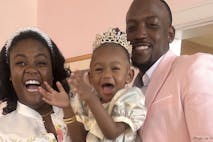
Research shows Catholic support for IVF declines once Church teaching is understood
Angeline Tan
·
CBO report: US demographic trends are dire, with deaths outpacing births by 2043
The Congressional Budget Office (CBO), a non-partisan agency which produces independent analysis of economic issues to support the Congressional budget process, recently released an updated Demographic Outlook report. Key predictions include an aging population over the next few decades, below replacement rate fertility levels, and slowed growth in the working-age population. The CBO has revised its projections from last year, predicting a smaller population growing at a slower rate over the next 30 years, as well as lower fertility rates.
Experts have suggested that demographic trends such as those predicted by the CBO will lead to increasing inflation, labor shortages, stagnating incomes, and a decline in prosperity, culture, and innovation in the United States.
The CBO predicts what it calls the “Social Security area population” (i.e., the population all residents of the 50 U.S. states and the District of Columbia; civilian residents of US territories; federal civilians, military members, and citizens living abroad; and non-citizens living abroad who are eligible for Social Security benefits) will increase from 335 million people in 2022 to 369 million people by 2052. However, this rate of growth is one-third the pace of population growth from 1980-2021.
PETITION: Tell TikTok to stop censoring Live Action
Article continues below
Dear Reader,
In 2026, Live Action is heading straight where the battle is fiercest: college campuses.
We have a bold initiative to establish 100 Live Action campus chapters within the next year, and your partnership will make it a success!
Your support today will help train and equip young leaders, bring Live Action’s educational content into academic environments, host on-campus events and debates, and empower students to challenge the pro-abortion status quo with truth and compassion.
Invest in pro-life grassroots outreach and cultural formation with your DOUBLED year-end gift!
Over the next decade, it predicts that net immigration will account for a whopping ¾ of overall population growth, with net immigration accounting for all population growth in 2043 and beyond, when deaths will exceed births.
The CBO further predicts that the population will age significantly over the next 30 years. It predicts that the ratio of people ages 25-54 to people aged 65 and older will decrease from 2.3:1 in 2022 to 1.7:1 in 2052. This means the number of people claiming Social Security benefits relative to the number of people in the working-age population will grow —there will be fewer working people to support those who rely on government benefits.
The CBO predicts that total fertility rates, which were already below replacement levels at 1.64 births per woman of childbearing age in 2020, will increase to 1.75 by 2030 and remain steady thereafter. However, this would mean that below-replacement fertility rates will be ongoing.
“Like” Live Action News on Facebook for more pro-life news and commentary!
Live Action News is pro-life news and commentary from a pro-life perspective.
Contact editor@liveaction.org for questions, corrections, or if you are seeking permission to reprint any Live Action News content.
Guest Articles: To submit a guest article to Live Action News, email editor@liveaction.org with an attached Word document of 800-1000 words. Please also attach any photos relevant to your submission if applicable. If your submission is accepted for publication, you will be notified within three weeks. Guest articles are not compensated (see our Open License Agreement). Thank you for your interest in Live Action News!

Angeline Tan
·
Politics
Cassy Cooke
·
Guest Column
Right to Life UK
·
Issues
Angeline Tan
·
Issues
Bridget Sielicki
·
Issues
Nancy Flanders
·
International
Bettina di Fiore
·
Human Rights
Bettina di Fiore
·
Politics
Bettina di Fiore
·
Human Interest
Bettina di Fiore
·
Activism
Bettina di Fiore
·